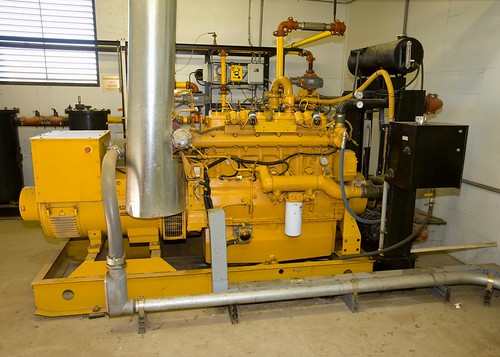Right now, across the country, innovative agricultural producers are turning farm animal manure into renewable energy through a process called anaerobic digestion. Anaerobic digestion is a proven technology – available to farmers today – that represents a huge economic opportunity for rural America, while simultaneously addressing our nation's energy and climate challenges. This technology utilizes bacteria that breakdown waste and produce a biogas that contains methane and carbon dioxide. The biogas is then captured and used as a source of renewable energy, primarily by combusting the gas to generate electricity.
What's so exciting about these technologies, like anaerobic digester systems, is that they can take manure and turn it into a more valuable resource. The biogas captured can be used to meet on-farm energy needs, utilized in various forms ranging from the biogas directly, to heat or electricity. Installing a digester can also increase farm income by offsetting the need to purchase electricity or fuels, and producers may be able to sell excess energy generated to the grid.
The economic opportunities these technologies create go beyond renewable energy generation. The material leftover after the manure is digested is rich in nutrients. This digestate can be sold as fertilizer or other value-added products for additional revenue. And because these projects will be installed and operated on farms throughout the country, widespread adoption of anaerobic digesters has the potential to create new, green jobs in rural America.
As impressive as the economic benefits are, the environmental rewards are as equally compelling. Anaerobic digesters actually provide two-fold greenhouse gas reduction. First, they capture methane that otherwise would be emitted from the manure into the atmosphere.
Second, by utilizing the trapped biogas as a renewable energy source, digesters displace the need for additional fossil fuels. In addition, digesters eliminate odor, reduce air pollution, kill disease-causing bacteria, and improve water quality.
While the benefits are clear, there's no arguing that anaerobic digester systems are a large investment. USDA offers several programs that can help with the cost of an anaerobic digester, including the new Conservation Loan program, the Rural Energy for America Program
(REAP), the Value-Added Producer Grant, and the Environmental Quality Incentives Program (EQIP). USDA can even help with the cost of an energy audit/feasibility study to help producers determine if a digester makes sense for their operation. The multiple benefits for farmers, rural America, and the environment ensure that these investments will result in big payoffs.
To learn how one farmer is turning manure into energy click here.


